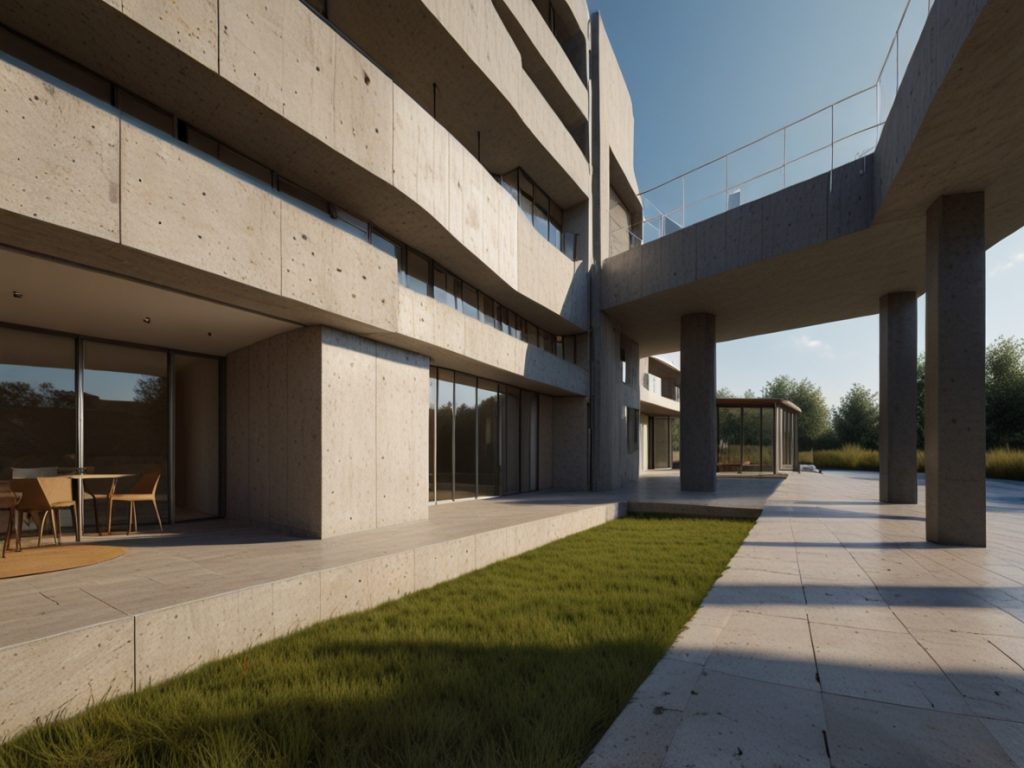
In the realm of architectural visualization, creating a stunning render goes beyond just modeling and texturing. Post-processing is an essential step that can elevate your architectural renders from good to extraordinary. By applying various post-processing techniques, you can enhance the visual impact, correct imperfections, and add artistic flair to your images. This process allows architects and designers to fine-tune their visuals, ensuring that the final output aligns perfectly with their vision and communicates the intended message effectively.
One of the primary benefits of post-processing is the ability to adjust lighting and color balance. Even with the most sophisticated rendering engines, the initial output can sometimes lack the vibrancy and realism needed to captivate viewers. Through post-processing, you can tweak the brightness, contrast, and saturation to achieve the desired mood and atmosphere. Color correction tools help in ensuring that the colors in your render are accurate and consistent with the real-world materials and lighting conditions.
Another significant aspect of post-processing is the addition of details that enhance realism. This includes techniques like adding depth of field, which mimics the way cameras capture scenes by blurring out-of-focus areas, and lens flares, which can give a sense of direction and intensity to light sources. Moreover, incorporating atmospheric effects such as fog, haze, or light blooms can add depth and dimension to your renders, making them more lifelike.
Experiment with different HDR lighting setups to create unique atmospheres in architectural renders. Adjust the intensity of HDR lighting to enhance realism and accurately represent how light interacts with materials in visualizations.
Color correction plays a pivotal role in enhancing the mood and tone of architectural renders. By implementing color grading, one can achieve a cohesive color palette in architectural visualizations, elevating the overall aesthetic appeal. Experimenting with various color correction presets allows for the selection of the most suitable one for your architectural renders.
Enhancing architectural renders with depth-of-field effects elevates the visual appeal by directing focus toward specific elements. By adjusting the level of blur, intricate details are highlighted, adding a touch of realism to the scene. This technique not only accentuates key features but also contributes to a more engaging viewer experience.
Experimenting with different depth of field settings allows for the creation of visually captivating compositions that tell a compelling story within the render. The strategic use of depth of field in architectural visualisations helps in guiding the viewer’s eye through the design, emphasising important aspects and fostering a deeper understanding of the space.
Incorporating depth of field into architectural renders goes beyond aesthetics; it serves as a powerful tool to evoke emotions and create a sense of immersion for the audience, making them feel connected to something beyond just visual representation.
Texture overlay is a powerful technique used in architectural renders to enhance the tactile quality of materials and add depth to visualizations. By incorporating texture overlays, designers can bring realism to their renders by simulating various surfaces like wood, concrete, or fabric. Experimenting with different texture overlay techniques allows for the creation of intricate details that elevate the overall look of the render. These overlays not only improve the composition of the image but also help in making it more visually engaging and captivating. By utilizing texture overlays effectively, architects can transform their renders into lifelike representations that resonate with clients and stakeholders.
Lens flare effects are a powerful tool to enhance the visual appeal of architectural renders. By incorporating various styles of lens flares, designers can infuse their visualizations with a sense of realism and dynamism. These effects play a crucial role in creating captivating lighting scenarios that elevate the overall aesthetics of architectural designs.
In architectural renders, incorporating people is crucial to offer scale and context to the design. By experimenting with various poses and placements of individuals, you can craft lively and realistic visualizations that resonate with viewers. Utilizing 3D models or cutouts of people within your renders helps populate the scene, injecting a sense of activity and human presence into the architectural space. This addition not only enhances the overall aesthetic appeal but also aids in conveying how the space may be utilized in real-life scenarios. Experimenting with different types of characters and their interactions within the render can significantly elevate the storytelling aspect of your architectural project.
In architectural renders, atmospheric effects like fog, haze, or mist play a crucial role in adding depth and drama to the visualizations. By incorporating these elements, architects and designers can elevate the overall look and feel of their projects. Experimenting with various atmospheric effects allows for the creation of a compelling sense of atmosphere and mood within the renders.
Utilizing atmospheric effects not only adds a realistic touch but also helps evoke emotions and enhance the storytelling aspect of architectural renders. Whether aiming for a serene setting or a mysterious ambiance, these effects contribute significantly to the overall impact of the design. Architects often use atmospheric effects strategically to guide viewers’ focus and create an immersive experience that goes beyond just showcasing the physical aspects of a building.
You’ve now explored various techniques to enhance your architectural renders, from utilizing HDR lighting to incorporating atmospheric effects. By mastering color correction, depth of field, texture overlay, lens flare effects, and adding people, you can elevate the visual appeal and realism of your renders significantly. Remember, attention to detail is key in creating captivating architectural visualizations that leave a lasting impression.
Take what you’ve learned here and apply it to your next project. Experiment with these techniques, fine-tune your skills and watch as your architectural renders transform into stunning works of art. Keep practicing, stay creative, and push the boundaries of your imagination to achieve renderings that truly stand out.